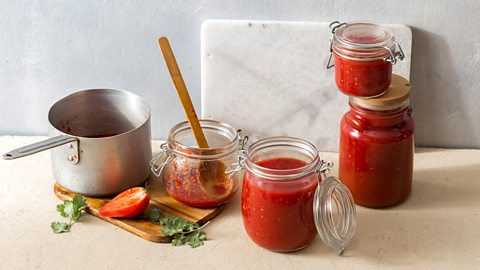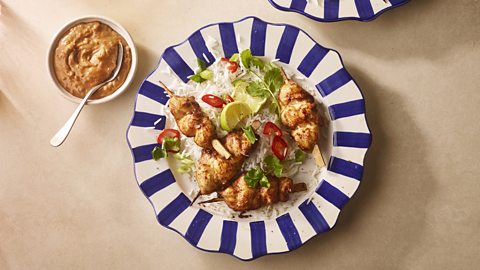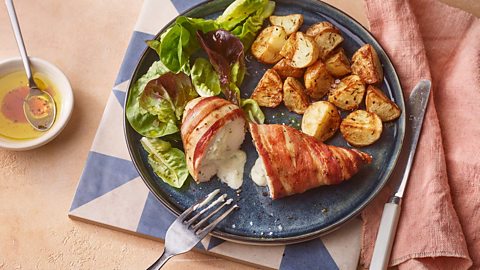Do you know what these food labels actually mean?
With all the different logos and buzzwords that appear on food packaging these days, it can be tricky to know what to look for. Here's how to decipher those labels and make informed decisions when grocery shopping.
By Sue Quinn
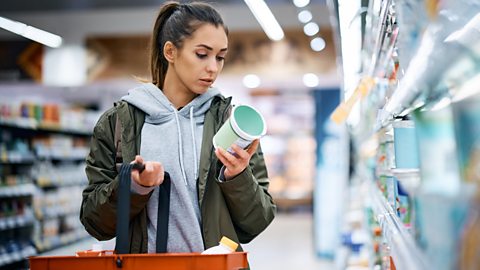
What’s the difference between free-range and barn eggs? Is ‘organic’ purely focused on chemical use? And do terms relating to a product’s ‘green’ credentials really carry any weight? In a world where there are new food labels emerging all the time, it can be hard to keep track of what they all mean.
Some wording on food packaging, such as the name of the food and its country of origin, is legally required to be there because it helps us make informed choices. Specific mandatory labelling rules are also in place for particular foods like bread, flour, honey, milk, meat products and fruit juices.
But often, food manufacturers voluntarily add to this information, printing different claims on packaging to encourage us to buy their products.
“Using voluntary terms on labels doesn’t add much to the cost of products,” says Steve Pugh, a food labelling expert and adviser to the government and the European Commission. “And if it works, it can be tremendously profitable for the manufacturer.”
“But if they do this, they have to follow the regulations,” he explains. “The most important thing is that they can’t be misleading – that’s the bottom line.”
Claims and terms on packaging are monitored by bodies such as the Advertising Standards Authority (ASA), the Competition and Markets Authority (CMA) and local enforcement, says Clare Wood, director of Food Labelling Services. But some claims don’t have legal definitions.
So, consumers could benefit from being better informed about many common terms to fully understand what they’re buying, says Wood: “I think lot more education is needed.”
So, what do some of the common labels on food packaging actually mean?
Organic
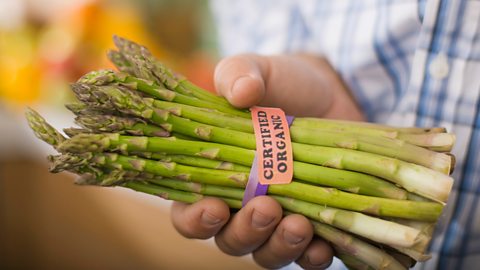
Under the law, any food labelled organic must meet strict standards and be approved by a control body, such as the Soil Association, whose stamp must appear on the packaging, too.
All certified organic food is GMO-free and organic farms that produce fruit, vegetables, poultry, meat and other food must avoid manufactured fertilisers, pesticides, herbicides and other chemicals – but that’s not all. Organic certification is only given if strict animal welfare standards are also met. For instance, The Soil Association – the UK’s largest organic certification body –requires cows to be at pasture, free to graze, whenever the weather allows (which is usually more than 200 days a year), while pigs must be given time to develop at a natural pace, kept with their family groups and given free access to fields.
Organic producers must also operate in a way that supports the ecology and biodiversity of the land, as well as water quality.
“The key thing about organic is that it’s a highly regulated global standard,” says the Soil Association’s Alex Cullen. “The law also requires that there are independent inspections to assure that the standards have been met. It’s a whole-system approach to food and farming.”
Some control bodies require higher standards than demanded by the EU regulations in certain areas (EU regulations still apply in the UK). However, as a minimum, organic eggs must come from flocks with no more than 3,000 hens, with six birds or less per square metre. Hens must be fed an organic, GM-free diet and have continuous access to organic land. Routine use of antibiotics is banned. Organic eggs have ’0’ stamped on the egg and carton.
Organic chicken meat comes from birds that spend a minimum of 33% of their lives with access to outdoor runs and are allowed to grow for at least 81 days. The total weight of the birds per square meter cannot exceed 21kg.
Free range

Food labelled ‘free range’ must also comply with EU regulations. Eggs (stamped ‘1’) come from hens that spend much of their time in barns but do have access to the outside. There’s no limit on flock size, but a maximum 2,500 birds are allowed per hectare of land and nine hens per square metre in the hen house. Adequate nest boxes, perches and litter must be provided.
Free range chickens reared for meat spend a minimum 50% of their lives with access to outdoor runs and are allowed to grow for at least 56 days. The total weight of the birds per square meter cannot exceed 27.5kg.
As for larger animals such as cows, sheep and pigs, Pugh says there are no specific regulations that dictate whether they’re classed as ‘free range.’ “It would be cruel to keep some of these animals outside throughout the winter in the UK,” he says.
Barn eggs (stamped ‘2’) can move around within a building and have access to nest boxes, perches and material for dustbathing. Caged eggs come from hens (stamped ‘3’) kept in cages within large buildings, which allow 750 centimetres squared per bird and a nest box.
Chickens reared for meat cannot be kept in cages due to the risk of disease. But that doesn’t mean they’re free range. Most meat chickens are indoor reared in large, closed buildings with artificial lighting. A smaller number are ‘improved indoor reared,’ which means they have a bit more space and natural light. Indoor reared birds grow for around 35–40 days.
GMO-free
Genetically modified plants or animals have had their genes altered in a way that didn’t occur naturally. Genes carry the instructions for all the characteristics that a living thing inherits, and genetic modification involves inserting one gene (or a small number) into a plant or animal to produce specific qualities. These plants or animals are known as genetically modified organisms (GMOs) and GM foods are those that contain GMOs.
GM foods must be authorised for sale by The Food Safety Authority after being assessed as safe. They must also say on their label if they contain any GMOs, however, products such as meat, milk and eggs from animals that are fed on GM animal feed do not need to be labelled.
To reassure consumers, some manufacturers state that their product is GMO-free. “If a manufacturer makes this claim they have to have the product tested using a recognised method to make sure it is,” Pugh says.
Trusted farm
Certain supermarkets use general phrases like this on some poultry and meat packaging, but they don’t have any legal definition.
“It’s marketeers trying to sell their products,” says Wood. “It might be that their farms are ‘trusted’ because they have a sole supplier, but who knows? I think a lot of these terms are opaque and it’s marketeers bending rules. These terms have to be able to be substantiated but they’re not necessarily regulated.”
She suggests looking out for a quality assurance stamps from schemes like Red Tractor, the RSCPA, B-Corp or Fair Trade to back-up these types of general welfare and quality terms.
Biodegradable
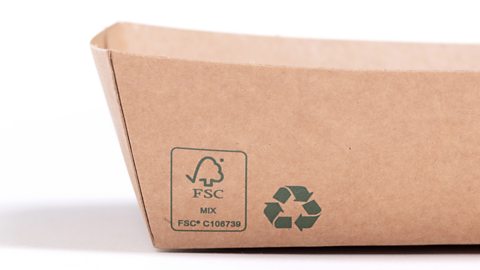
Many of us look for planet-friendly packaging when we do our food shopping, but the term ‘biodegradable’ might not mean what you think it does, says Wood.
“Most things are, to some extent, biodegradable,” even though they might take hundreds of years to decompose. So that’s not much of a virtue. ‘Compostable’ could be a more meaningful term to look out for, as it’s a regulated term with a legal definition, she says.
“Compostable products have to be able to decompose in a certain period of time, whereas there are no guidelines for labelling something as biodegradable,” Wood says.
BPA-free is another term you might see on some food packaging. Bisphenol A (BPA) is a chemical widely used to make rigid plastics including food storage containers as well as the lining on some food and drink cans. It can’t be used on items designed for children.
According to the Food Standards Agency, a tiny amount of BPA may be transferred from some packaging to food and drinks. The level of BPA detected in food is not currently considered to be harmful, the FSA says. However, it is currently considering ‘new evidence’ in relation to the chemical. Pugh says packaging has to undergo recognised testing to prove it contains no BPAs, in order to be labelled BPA-free.
Eco terms
‘Green’ claims on food and drink packaging, along with other household essentials, are currently being reviewed by the Competition and Markets Authority (CMA). It is concerned consumers might be paying a premium for products “that aren’t what they seem,” says Sarah Cardell, chief executive of the CMA.
The CMA will investigate terms such as ‘sustainable’ and ‘better for the environment’ to see whether they stack up, too.
Wood hopes the investigation will also cover phrases like ‘carbon neutral’ and ‘net zero.’ “Any environmental claim has to be fully substantiated through the full product lifecycle, and this is both for the product and its packaging,” she says. “But there’s no regulatory definition of carbon neutral, although there are international standards.”
A spokesperson for the CMA could not confirm when the review would be completed.
Originally published July 2023
